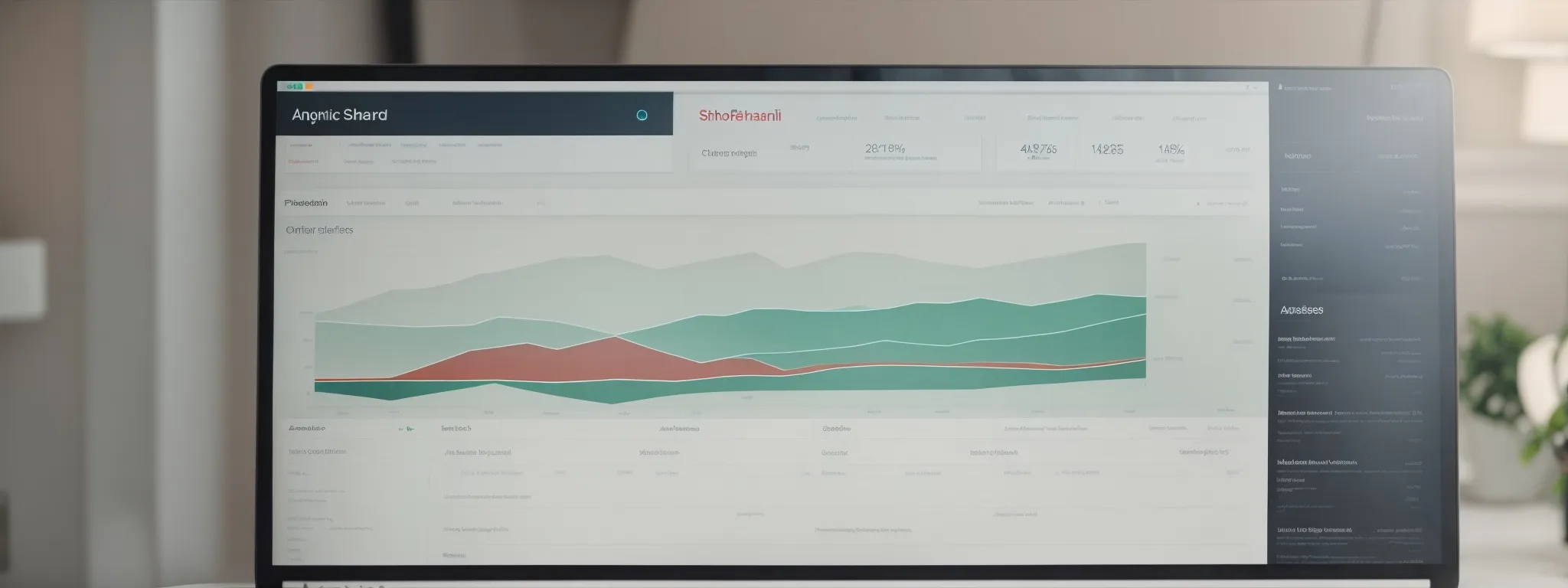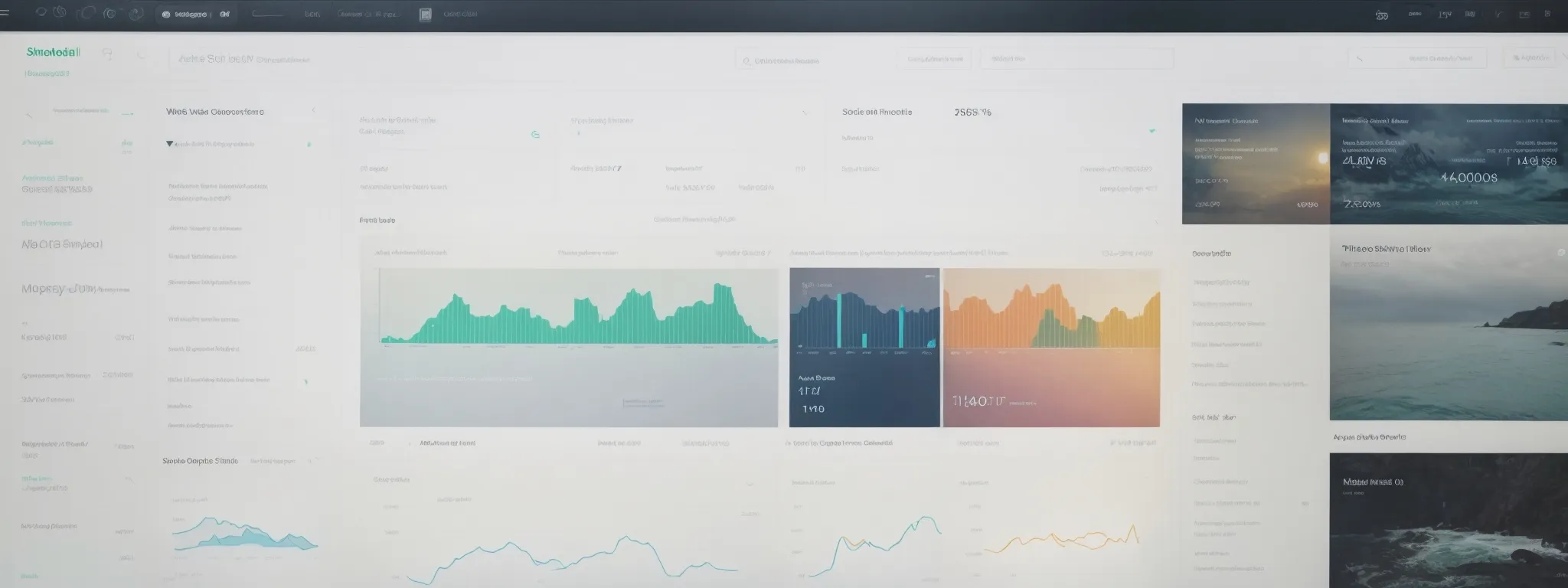SEO-Friendly Shopify Store Examples
Showcase of SEO-Friendly Shopify Stores to Inspire Your E-Commerce Strategy As the e-commerce arena becomes increasingly competitive, having an SEO-optimized Shopify store isn’t just a nicety; it’s […]
Showcase of SEO-Friendly Shopify Stores to Inspire Your E-Commerce Strategy
As the e-commerce arena becomes increasingly competitive, having an SEO-optimized Shopify store isn’t just a nicety; it’s a necessity.
Leaders in the digital marketplace understand that a precise SEO strategy can elevate a Shopify site from obscurity to a high-ranking presence in search engine result pages.
The finesse with which top-performing Shopify stores approach elements like URL structure, keyword optimization, and user experience reveals a roadmap for success.
By analyzing the strategies of these successful Shopify stores, merchants gain insights into not just attracting visitors but converting them into loyal customers.
Keep reading to uncover the expert SEO tactics that can transform your Shopify store into an e-commerce powerhouse.
Key Takeaways
- Strategic SEO Elements Are Critical for Increasing Shopify Store Visibility on Search Engine Result Pages
- Incorporating Targeted Keywords and Optimizing URL Structure Are Essential for Improving Search Rankings
- Visual Asset Optimization, Including Image Alt-Text and Metadata, Can Significantly Enhance a Store’s SEO Efforts
- An Effective Internal Linking Strategy Enriches the User Experience and Strengthens a Site’s SEO Structure
- Schema Markup Provides Structured Data to Search Engines, Offering Rich Snippets That Improve Search Appearance and Click-Through Rates
Top SEO-Friendly Shopify Stores to Model Your Site After

Dissecting the framework of eminent Shopify stores reveals a treasure trove of strategies that newcomers and seasoned ecommerce professionals alike might emulate to escalate their digital presence.
These vanguards of the e-commerce domain have harnessed key SEO elements to carve out a niche in the bustling online marketplace.
A closer examination divulges how the judicious application of SEO best practices, from URL structure refinement to on-page content optimization, has pivoted these stores into prominence on search engine result pages.
Hence, a deep dive into their methodologies, particularly in keyword implementation and content deployment, along with the savvy execution of backlinking tactics, offers indispensable wisdom for entrepreneurs aspiring to augment their Shopify site’s visibility and user experience, thereby forging their path to online success.
Analyzing the Structure of Successful Shopify Stores
In the realm of successful Shopify stores, a common denominator is the meticulous attention to SEO fundamentals. By deploying an SEO content strategy that encompasses meticulously researched keywords and crafting meta descriptions that captivate shoppers and search engines alike, these top-performing stores fine-tune their on-page SEO services, ensuring each product page, collection page, and blog post contributes positively to their website SEO.
LinkGraph’s SEO services shine a light on the necessity of a site’s architecture that promotes easy navigation and enhances user experience. Through the employment of LinkGraph’s SearchAtlas SEO software, ecommerce businesses enhance their Shopify site’s structural integrity by optimizing site speed, simplifying url structure, and providing an intuitive, responsive shopping experience – elements critical to retaining visitors and improving conversion rates.
Key Features That Boost the SEO of These Stores
Reflecting on the stellar Shopify stores, one readily notes how the scrupulous employment of white label SEO and white label link building propels these entities toward the summit of their industry. Through the strategic use of guest posting services and robust blog writing services, these successful ecommerce platforms ensure their backlink profiles are both diverse and authoritative, significantly boosting their visibility on search engine result pages.
Moreover, businesses thriving in the complex arena of ecommerce SEO understand the pivotal role that a free SEO audit and free backlink analysis play in unveiling SEO issues and garnering valuable insights. By leveraging SearchAtlas SEO software, these top-tier stores maintain a continuous optimization cycle, enhancing on-page factors like page titles and meta descriptions, while refining their SEO content strategy for blogs and landing pages, keeping them ahead in a game where precision and adaptability are the cornerstones of achieving SEO success.
Understanding Their Approach to Keywords and Content
Success in Shopify SEO is not just about the placement of keywords; it’s the strategic selection that differentiates a thriving ecommerce site. The most successful Shopify merchants conduct in-depth keyword research to uncover terms not only of high search volume but also with a competitive keyword difficulty level they can realistically rank for. This foundational step ensures each product page and blog post is an intentional stride towards more targeted traffic and higher search engine rankings.
Content is the lifeblood of SEO, and the best Shopify stores treat it as such, optimizing each item on their virtual shelves for organic discovery. Sharply focused on relevance and quality, the content strategy for these stores spans engaging product descriptions, compelling blog posts that serve both user intent and search engine criteria, and informative category pages that guide searchers seamlessly through the buyer’s journey:
- Improving the relevance and descriptiveness of product URLs and page titles for better SERP placement.
- Developing an authoritative online voice through regular, value-driven blog content that caters to user queries and interests.
- Creating comprehensive category pages that help consumers navigate the storefront while strategically including target keywords.
With consistent application of such content-focused SEO strategies, these successful Shopify stores not only draw in visitors but also secure their loyalty and encourage conversions.
Insights Into Their Linking Strategies
Within the competitive digital marketplace, adept Shopify merchants implement strategic linking techniques as part of their overarching SEO framework. These strategies often include harnessing LinkGraph’s SEO services that accentuate the potency of white label link building, creating a network of high-quality, relevant links that signal authority and trustworthiness to search engines.
Moreover, through the integration of SearchAtlas SEO software, these ecommerce champions amplify their internal linking structure, meticulously connecting product pages, blog articles, and collection pages. Such internal links not only facilitate a smoother digital marketing funnel but also meticulously guide visitors across the ecommerce landscape, enhancing user experience and reinforcing the site’s SEO foundations.

As digital markets expand, the quintessence of SEO-friendly design comes to the forefront of e-commerce success, with user navigation playing a critical role.
The interplay between a seamless navigation structure and search engine optimization unfolds within the digital aisles of premier Shopify stores, where the ease of finding products correlates with higher ranks on search engine result pages.
Eager entrepreneurs and seasoned developers alike turn their gaze to the modus operandi of top-ranking stores, seeking to understand the underpinnings of their navigation schemas and categorization techniques.
Through an exploration of their strategic planning, these case studies illuminate the path toward crafting a user-centric, SEO-enhanced shopping experience that encourages engagement, reduces bounce rates, and ultimately lifts conversion metrics.
How Easy Navigation Contributes to SEO Success
The functionality of navigation on any Shopify store stands as a linchpin for its SEO success, primarily because it simplifies the path search engines take to crawl and index the site’s pages. This streamlined structure effectively boosts the site’s visibility on search engine result pages (SERPs), as search algorithms favor sites offering a clear journey through meaningful and logically connected content.
Moreover, the ease of navigation directly influences the user’s time on site, a metric closely monitored by search engines to evaluate site quality. A well-organized and intuitively designed navigation system reduces frustration and encourages deeper engagement with the site’s content, thereby signaling to search engines the site’s value to consumers, which in turn can translate into improved search rankings.
Analyzing Navigation Schemas of Top-Ranking Stores
Analyzing the navigation schemas of top-ranking Shopify stores, it becomes apparent that strategic categorization and a crystal-clear hierarchy define their navigational prowess. With this in place, these stores enable swift, frictionless access to their catalogues, which not only improves user experience but also directs the flow of organic traffic precisely where it is most beneficial.
LinkGraph’s SEO services recognize the nuance in crafting such navigational frameworks, expertly tailoring them to the unique demands of each Shopify site. Employing the adaptive capabilities of SearchAtlas SEO software, LinkGraph’s team augments the navigational efficiency of ecommerce stores, optimizing for both search engine discovery and user engagement.
Best Practices in Categorization for SEO
In crafting a masterful SEO strategy for a Shopify store, categorization is not to be underestimated. The meticulous organization of products into clear, distinct categories enhanced with carefully selected keywords can significantly amplify a store’s prominence in search engine queries, making it effortless for both search engines and shoppers to pinpoint relevant items.
LinkGraph’s SEO experts underscore the importance of coupling a logical catalog structure with the dynamic insights provided by SearchAtlas SEO software. This powerful synergy not only bolsters the store’s relevance to specific consumer searches but also fortifies the site’s architecture, establishing a robust foundation for both on-page SEO victories and long-term digital marketing triumphs.
Unlocking the Power of Keyword-Rich URLs in Shopify

As an integral component of Search Engine Optimization, the strategic crafting of URLs holds considerable sway over an e-commerce site’s search rankings.
In the bustling online marketplace, Shopify merchants integrating keyword-enriched URL structures stand as a testament to the power of meticulous SEO elements in underpinning a robust digital footprint.
The following discourse ventures into the realm of exemplary Shopify stores, whose strong URL structures serve as beacons to those eager to refine their digital strategies.
Deliberate keyword placement within URLs not only clarifies content context for search engines but also elevates the user experience, guiding customers seamlessly to their intended destinations.
By harnessing this often-overlooked facet of on-page SEO services, retailers can transform the simple URL into a potent tool for boosting visibility and solidifying their market stance.
Influencing Search Rankings With Optimized URLs
Within the competitive landscape of e-commerce, effective utilization of URLs can exert a remarkable influence on search rankings. Merchants leveraging Shopify’s platform often witness the efficacy of incorporating target keywords into their URL structure, as it aids search engines in comprehending the page content and enhances the relevance of their site within search results.
An adeptly structured URL serves as a cog in the machinery of SEO, broadcasting a clear signal to search algorithms regarding the page’s thematic relevancy, thus heightening its potential for higher ranking positions. Properly optimized URLs, replete with strategic keywords, not only clarify intent for search engines but also provide users with a concise indication of what to expect upon landing on the page:
| SEO Element | Benefit | Example |
|---|---|---|
| Keyword-Rich URLs | Enhanced Page Relevancy | /womens-red-pumps/ |
| Concise URLs | Improved User Experience | /sale/ |
| Descriptive URLs | Clearer Intent for Search Engines | /blog/seo-strategies-for-shopify/ |
Examples of Shopify Stores With Strong URL Structures
Observing the digital storefronts of exemplary Shopify stores, one discerns a profound mastery over URL construction that strategically incorporates relevant keywords. This nuanced approach not only amplifies their online visibility but also serves as a navigational compass for users, directing them with precision to desired product pages and categories.
Noteworthy are those Shopify entrepreneurs who have transcended mere inclusion of keywords, crafting URLs that resonate with both clarity and brevity, thus enhancing their stores’ findability and user accessibility. Their URL structures stand as blueprints for optimal e-commerce SEO, marrying functional simplicity with potent search engine appeal.
Effective Strategies for URL Keyword Integration
Strategically infusing URLs with keywords necessitates a balance between relevance and succinctness: a prime objective for those optimizing their Shopify store. Such integration not only gives a competitive edge but also enhances the user’s navigational ease, ensuring both search engines and potential customers quickly grasp the core offerings of a page.
Maximizing URL potential involves thoughtful craftsmanship, past simply seeding them with keywords. LinkGraph’s SEO services advocate for a consistent, structured approach where every product URL becomes a conscious step towards better search visibility:
- Employ descriptive, keyword-focused slugs that directly correlate to the page’s content.
- Steer clear of using excessive parameters or numeric identifiers that obfuscate the URL’s readability.
- Ensure relevancy by aligning the URL with the page title and header tags for a cohesive SEO message.
How Top Shopify Stores Utilize H1 Tags for SEO Gains

In the echelons of exemplary Shopify stores, the strategic deployment of H1 tags plays an instrumental role in distinguishing their SEO strategy.
These leading ecommerce sites elevate the function of H1 tags beyond mere headings, transforming them into pivotal SEO levers that enhance the visibility and appeal of their product and collection pages.
The careful crafting and positioning of these tags serve as silent sentinels, guiding search engines and shoppers alike through a rich tapestry of thoughtfully arranged content that beckons the click and retains the gaze, a key aspect for any business eager to mirror the success of top-tier online merchants.
Breaking Down the Use of H1 Tags in Successful Shops
A tour through prominent Shopify stores unveils a strategic emphasis on H1 tags, with these merchants fine-tuning the H1 element to serve as a beacon for both search engines and users. These identities, keen on maximizing SEO outcomes, meticulously fine-tune their H1 tags to reflect core keywords, ensuring they align succinctly with the content’s theme and purpose.
In analyzing successful Shopify operations, it becomes evident that their utilization of H1 tags is not simply a matter of formatting text but a deliberate SEO choice. Stores excelling in search engine optimization integrate H1 tags to distinguish and highlight the main topic of a page, enabling clear and immediate recognition of content hierarchy by search algorithms.
Crafting Compelling H1 Tags for Product and Collection Pages
For a Shopify store, the H1 tag on each product and collection page is much more than a simple heading; it’s an authoritative signal to search engines, pinpointing the page’s central content. The adept crafting of H1 tags by top Shopify stores involves not just a flair for compelling copy but also a sharp focus on SEO impact. These tags are carefully infused with primary keywords that succinctly summarize the page’s offerings, boosting relevance in the eyes of search engines and aiding visitors in their quest for desired products.
As LinkGraph’s SEO services would attest, the optimization of H1 tags on product and collection pages is tantamount to carving pathways for prospective customers and search engines alike. By constructing H1 tags that are short, descriptive, and keyword-rich, leading Shopify stores skillfully encapsulate the essence of their products, simultaneously enhancing SEO performance and strengthening the consumer’s shopping experience.
Image Optimization Strategies in Leading Shopify Stores

In the dynamic landscape of Shopify e-commerce, optimizing visual assets is not just about aesthetics but also a strategic cornerstone of SEO.
Merchants who master the subtleties of image optimization not only enhance the appeal of their online stores but also significantly bolster their SEO efforts.
This section will reveal how meticulously chosen and optimized imagery can impact SEO and will provide actionable insights gleaned from case studies.
The following discourse will then render practical tips for entrepreneurs to integrate successful image SEO techniques into their own Shopify stores, with a keen focus on replicating the impactful strategies harnessed by the leaders in the digital marketplace.
Case Studies on Image Optimization and Its SEO Impact
In the competitive sphere of e-commerce, Shopify stores accentuating the value of image optimization set a benchmark for how visual elements influence SEO outcomes. These cases exemplify how strategic alt-text implementation and file-naming conventions targeting relevant keywords can lead to significant improvements in search engine visibility and user engagement, propelling stores beyond their competitors on SERPs.
Leading Shopify stores demonstrate an adept balancing act: rich, high-quality product images that allure visitors, paired with scrupulous optimization to maintain optimal site speed. Here, well-optimized images serve a dual purpose, enhancing the shopping experience while allowing search engines to index visual content accurately, thus driving targeted traffic and increasing click-through rates:
- Optimized images are properly compressed to reduce load times, ensuring a swift and smooth shopping experience for users.
- Stores incorporate descriptive, keyword-focused alt attributes that aid search engines in understanding and ranking the visual content appropriately.
Tips for Replicating Successful Image SEO Techniques
To echo the triumphs of frontrunning Shopify stores, retailers are urged to harness the proficiency of LinkGraph’s SEO services—tailoring a comprehensive SEO strategy that transcends mere visual appeal by integrating SEO fundamentals into every visual aspect. This includes optimizing file sizes to expedite page loading while ensuring product images maintain high resolution to captivate customers and sustain their engagement with the site.
Additionally, pioneering merchants capitalize on the latent potential of image metadata, infusing it with relevant keywords and structured data. This entails a meticulous approach to crafting alt-texts and file names that reinforce the contextual message of the visual media aligning with the coveted search terms identified through diligent keyword research, an approach that LinkGraph’s SEO content strategy can enrich.
Linking Practices of High-Performing SEO Shopify Stores

In the intricate world of e-commerce SEO, the prowess of a Shopify store’s internal linking strategy can be a game-changer for visibility and user retention.
High-performing Shopify stores distinguish themselves by executing linking practices that underscore the interconnectedness of their digital content, underpinning a seamless and enriched browsing experience for their customers.
This strategic refinement of internal linkage exemplifies the prioritization of both navigational ease and search engine appreciation, setting a benchmark for those seeking to elevate their e-commerce strategy in line with SEO-leading contenders.
Internal Linking Structures That Win at SEO
Top-tier Shopify stores illustrate an exemplary internal linking network that strategically guides visitors through a well-defined path of related products and informative blog posts. Such a network not only enriches the customer journey but also signals to search engines the value and breadth of the site’s content, thereby bolstering its SERP standings.
These stores deploy LinkGraph’s SEO services to weave a web of internal links that underpin the site’s thematic relevance, ensuring that each hyperlink serves as a conduit to thematically related content. This approach not only enhances the user experience but also fortifies the site’s SEO structure, which is essential for maintaining digital prominence in an increasingly competitive e-commerce landscape.
Learning From Shopify Stores With Strong Internal Link Profiles
Exemplary Shopify stores serve as a testament to the efficacy of strategic internal link profiles that bolster their SEO stature. By scrutinizing these virtual marketplaces, one notices the meticulous placement of internal links that not only facilitate intuitive site traversal but also consolidate link equity, cultivating a robust online authority.
Within this cadre of SEO-focused merchants, the utilization of LinkGraph’s SEO services emerges as a pivotal factor in constructing an impactful internal link architecture. These adept retailers demonstrate how coherent, contextually relevant links can enhance the topical strength of their sites, making them a beacon for search engines and a hub for consumer engagement.
Content Strategies of SEO-Friendly Shopify Stores

The tapestry of an SEO-friendly Shopify store is rich with well-crafted content, serving as the digital flesh and bone that positions the store within the ever-evolving landscape of e-commerce.
Success stories from the most optimized storefronts on Shopify highlight how content, when deftly aligned with SEO aspirations, capacitates merchants to climb the ranks of search engine result pages.
These retailers understand that meaningful content is the key that unlocks the potential of their digital domains, driving traffic that converts.
Mastering the art of producing content that simultaneously satisfies the demands of search algorithms and user engagement is the shared hallmark of these market leaders.
As one contemplates the strategies deployed by these exemplars of the Shopify community, vital insights emerge into creating content with precision—a dual focus that navigates the complexities of ranking favorably while fostering an unmatched shopping experience.
Creating Content That Ranks: Lessons From the Top Stores
Top-performing Shopify stores exemplify the potency of seamlessly integrating a strategic SEO content strategy into every layer of their site. A thorough analysis reveals these stores wield content as an exacting tool—each blog post is a meticulously hewn magnet for traffic, each product description an asset crafted to meet both consumer interests and strict search engine parameters.
LinkGraph’s SEO services bolster these premier retailers, enabling a nuanced application of keyword research that informs the creation of compelling, search engine-optimized content. Their collective prowess lies in cultivating informative and relevant narratives that resonate with both the algorithms of search engines and the discerning eyes of potential customers, setting a benchmark for content that ranks highly.
Types of Content That Drive Traffic and Improve SEO
In the competitive field of digital marketing, SEO-friendly stores understand that content must act as both a magnet for traffic and a pillar for SEO rankings. For these savvy ecommerce stores, the emphasis is on producing evergreen content that resonates with consumers’ persistent needs and search trends, echoing a strategic SEO content strategy that drives organic traffic and strengthens the authority of the Shopify store within its niche.
Furthermore, these trailblazing merchants invest in creating detailed product guides and engaging multimedia content, understanding their dual impact on user experience and search engine rankings. These types of content not only serve to educate and inform visitors but also to capture valuable search engine real estate by targeting long-tail keywords and niche queries, thus paving the way for increased visibility and conversion potential.
Effective Product and Collection Descriptions in Shopify SEO

In the competitive arena of Shopify e-commerce, product and collection descriptions act as a cornerstone of SEO, providing both a narrative and context for offerings that can significantly elevate a site’s search engine stature.
Keen awareness of this fact propels savvy merchants to polish their descriptions meticulously, ensuring the language employed not only resonates with consumer intent but also aligns seamlessly with search engine algorithms.
As curators of customer experience and custodians of keyword-rich content, these businesses understand the dual imperative of crafting descriptions that enhance SEO while simultaneously catalyzing conversions.
This understanding underscores the essential nature of descriptions in converting casual browsers into committed buyers, reflecting the vital role they play in an integrated SEO content strategy.
How Detailed Descriptions Influence SEO
Within the competitive landscape of Shopify e-commerce, the nuances of product and collection descriptions are paramount to bolstering SEO. These descriptions offer a substantial opportunity to enhance site visibility by embedding targeted keywords, facilitating search engines in matching queries to the most relevant content, thereby uplifting the store’s presence on search result pages.
Accomplished Shopify merchants recognize that detailed descriptions contribute not only to superior SEO but also to a more engaging user experience. Precisely curated content encapsulates product features and benefits, stimulating consumer interest and promoting higher click-through rates from SERPs, which indirectly signals to search engines the page’s value and relevance.
Crafting SEO-friendly Descriptions That Convert
In the pursuit of SEO mastery within the Shopify ecosystem, retailers are discovering the transformative power of descriptions that are fine-tuned for search engines while resonating with the consumer psyche. The most compelling descriptions blend strategic keyword placement with persuasive language, generating organic search visibility as well as facilitating the consumer’s journey from interest to purchase.
LinkGraph’s SEO services excel in guiding clients through the intricate process of creating product and collection descriptions that are not merely informative but are also structured to maximize SEO leverage. Their approach ensures every word counts towards enhancing both the user’s understanding and the site’s search engine ranking, striking a balance that is essential in the competitive arena of online retail.
Mastering Title and Meta Description Optimization on Shopify

The strategic nuance of title tags and meta descriptions holds transformative power for Shopify stores, markedly influencing their visibility and appeal on search engine result pages.
A well-optimized title tag captivates the essence of the store’s offering with precision, while an effectively crafted meta description can dramatically elevate user curiosity, enhancing click-through rates.
The following segments will delve into outstanding examples of Shopify stores that exemplify mastery in optimizing these crucial SEO elements and provide actionable insights on concocting meta descriptions that serve as catalysts for heightened user engagement.
Shopify Store Examples With Outstanding Title Tags
Leading Shopify stores often emerge as paragons in terms of SEO, setting a precedent with title tags that are not only succinct but saturated with targeted keywords. These stores showcase the acute significance of title optimization, employing titles that serve as a lighthouse for search engines, guiding waves of potential customers to their products.
An examination of these digital storefronts unveils title tags that epitomize SEO efficacy, weaving brand distinction with keyword relevance to capture the attention of both search engines and consumers. Skillfully optimized, these title tags distill the essence of the store’s content into a compelling beacon, compellingly visible in the competitive ocean of the web.
Writing Meta Descriptions That Improve Click-Through Rates
Meta descriptions act as concise summaries beneath the blue links on search engine result pages, offering businesses a unique opportunity to pitch their Shopify store’s value to potential customers. When skillfully optimized, these snippets provide an implicit call-to-action, piquing interest and generating clicks by succinctly unpacking the value proposition within a tightly woven narrative.
The crux of crafting meta descriptions that amplify click-through rates lies in the strategic balance of teasing compelling content while integrating target keywords synonymous with consumer search intent. Such careful integration not only attracts the discerning eye of quality-driven shoppers but also aligns with the latent objectives of search algorithms, nudging searchers closer to an engaged site visit.
Schema Markup: Upping the SEO Game in Shopify Stores

In the echelons of e-commerce success, cutting-edge Shopify stores are elevating their SEO capabilities by implementing schema markup, a powerful but often underutilized component of search engine optimization.
This advanced SEO tactic structures data in a way that search engines can not only crawl but also comprehend and display more effectively in search results.
Real-world applications of schema markup in Shopify exemplify transformative storytelling through rich snippets, while a strategic guide to its implementation empowers merchants to refine their search appearance, cementing their image as contemporary leaders in the digital marketplace.
Real-World Uses of Schema Markup in Shopify SEO
In the dynamic world of e-commerce, Shopify merchants who integrate schema markup are steering their stores towards unprecedented levels of SEO efficiency and user compatibility. Utilizing schema allows these savvy retailers to communicate directly with search engines, providing structured data that can be displayed prominently as rich snippets, which in turn, elevates the user’s search experience by offering snapshot information that can influence click-through rates.
By employing schema markup, high-performing Shopify stores have seen tangible SEO advancements, with their products gaining enhanced visibility through features like star ratings, price listings, and product availability directly in the search results. This strategic deployment transforms their product pages into compelling narratives within search engine result pages, providing an edge over competitors by making key product information immediately accessible to potential buyers.
Guide to Implementing Schema for Better Search Appearance
Embarking on the integration of schema markup within a Shopify store initiates a pivotal transformation in how information is projected to search engine algorithms. Meticulous incorporation of this structured data is critical, enabling search engines to parse and display pertinent information in a way that improves the search appearance, thus amplifying the product’s visibility and allure to prospective customers.
LinkGraph’s SEO experts are adept at deftly weaving schema markup into the fabric of a Shopify store, ensuring that the finer details, from product specifications to customer reviews, are presented within search results as rich snippets. This elevates the store’s contents beyond mere listings, inviting a higher click-through rate by showcasing key information at a glance, a cardinal step in optimizing e-commerce strategy for search engines.
Conclusion
The showcased SEO-friendly Shopify stores embody best practices essential for e-commerce success.
Their meticulous approach to SEO fundamentals such as strategic keyword implementation, optimized URL structures, and compelling meta descriptions has propelled them to prominent positions in search engine results.
These stores exemplify the importance of a well-structured site architecture, designed to offer a seamless user experience and to guide search engines efficiently, resulting in improved visibility and higher SERPs rankings.
By observing these top-performing stores, it’s clear that integrating white label SEO and utilizing in-depth keyword research are pivotal to crafting content that draws and retains visitors while encouraging conversions.
Additionally, a strategic internal linking framework and well-optimized images are vital to support SEO efforts.
In conclusion, the importance of studying and emulating SEO-friendly Shopify stores cannot be overstated.
They provide a wealth of insights into effective content strategies, from optimized product descriptions to engaging blog posts, that drive traffic and improve SEO.
Offering inspiration and practical guidance, these Shopify stores highlight the transformative impact that adept SEO strategies can have on elevating an e-commerce brand in the digital marketplace.



















































































